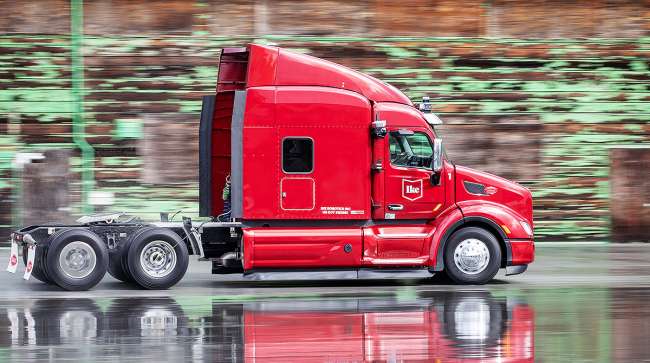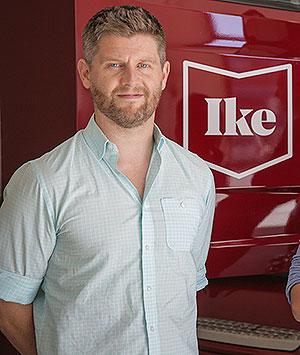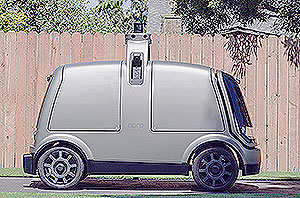Senior Reporter
Ike Maintains Automation Will Add Truck Driving Jobs

[Stay on top of transportation news: Get TTNews in your inbox.]
Automated trucks developer Ike has a message for those behind the driver’s wheel of an 18-wheeler now: Automation can be complementary, not competitive.
More shorter haul jobs, the company maintains, will be a key part of a future in which automated trucks go repetitively back and forth along lengthy freight corridors.

Alden Woodrow by Ike
Ike recently posted its opinions at online site Medium.
“As attention to automation has grown in recent years, apocalyptic predictions have flourished: Millions of truck drivers will be put out of work. Everyone from presidential candidates to the Onion [a satirical publication] is in on the story,” Ike CEO Alden Woodrow wrote.
“Anyone developing this safety-critical technology needs to earn the trust of the industry and the public, and we take that responsibility seriously,” Woodrow later told Transport Topics.
Recently, the company worked with economist Charles Hodgson to analyze its approach to automated trucking and build a detailed economic model that projects impacts to truck driving jobs nationally over the next 10 years.
Hodgson’s analysis suggests Ike’s approach could create nearly 140,000 new local truck-driving jobs by 2030.
“The analysis projects a growth in overall freight volumes, driven by cost savings and productivity gains from automation,” Woodrow said. “This will require additional trucks to move goods both on the highways and on surface streets.”
Anyone is welcome to review the detailed methodology at https://t.co/T6ylXjWms5 and even dive into the code and come to their own conclusions.
The thing I'm most proud of is our profiles of five real drivers, and exploration of how their work may change in the future. We have — Alden Woodrow (@aldenwoodrow) November 12, 2019
Ike is working toward developing automated trucks on a large scale that arrive with freight at a transfer hub after traveling the highways. Trucks driven by humans would then redistribute the freight. Those shorthaul jobs would keep truck drivers closer to home and make use of their skills and expertise where it matters, according to Ike.
“There is a long road ahead, and we’ll need to demonstrate over time that automation can make trucks safer, truckers more valued and trucking more productive,” Woodrow said.
For its analysis, Ike assumed initial growth occurs in Texas in 2024. Two years later, this model shows automated trucks spread throughout the Southwest and into California. By 2028, the trucks are operating across the continent — although more development and testing on operating in winter conditions is likely.
Ike open-sourced the entire model and all the data on GitHub to allow others to build on top of this analysis and come to their own conclusions.
Electrification of commercial vehicles may benefit as a consequence of transfer hubs.
“Ike’s transfer hub model could help drive the electrification of heavy-duty vehicles for the short haul,” Woodrow said, “which could help mitigate increases in emissions, particularly for idling vehicles in urban areas.”

Nuro vehicle by Kroger Co. via AP
The results of the economic analysis Ike released are unique to itself “in the sense that they are based on a number of our assumptions about geography, time, utilization and cost savings. Other approaches would yield different results,” he added.
Ike licensed technology in 2018 from Nuro, a company that makes delivery robots. Ike got a copy of everything Nuro had built over the previous two years and the IP associated with that, and began applying it to trucks. Some of Ike’s top executives had worked at Uber.
“We’re excited to see others adopting the transfer hub approach, and to see it being widely accepted as the most realistic and practical application of automation for trucks,” Woodrow said.
Meanwhile, Ike has taken steps to become a more familiar part of the trucking industry.
It is a member of American Trucking Associations, the California Trucking Association, Truckers Against Trafficking and Women in Trucking, and an associate member of the Commercial Vehicle Safety Alliance.
Want more news? Listen to today's daily briefing:

